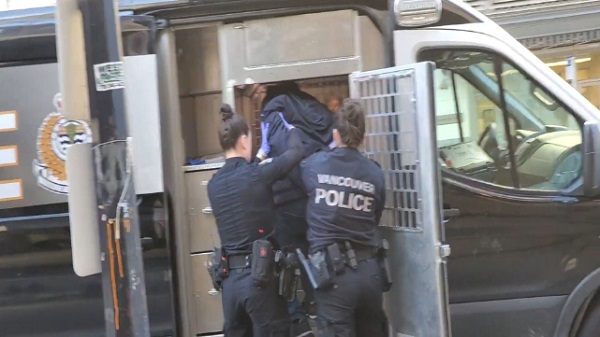Bruce Dowbiggin
Tale Of The Tape: Jerry Vs. Erin As Unifor Fights To Protect Media Slush Funds
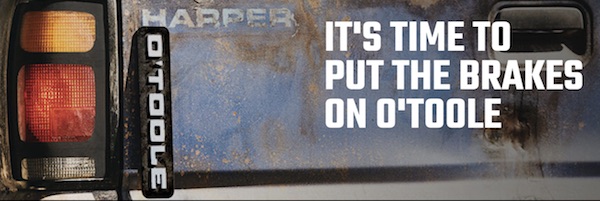
After calling the federal election, Justin Trudeau says Canadians need to “counter the ‘she-cession’ and turn it into a ‘she-covery’.”
The writ has dropped and Canadians now have the head-to-head matchup they’ve wanted. Conservative Party of Canada leader Erin O’Toole versus Jerry Dias, president of Unifor, Canada’s largest private union that includes everything from auto workers to TV workers.
Oh, you thought we were going to say the matchup between O’Toole and Justin Trudeau, the sitting prime minister of this frozen shore? That’s what the Racing Form says, no?
Certainly Trudeau is the nominal figure flogging for votes. But with Gerry Butts now a pom-pom boy on the sidelines Trudeau’s most influential and powerful ally is Dias, who heads the merger of the Canadian Auto Workers (CAW) and Communications, Energy and Paperworkers unions— a rabble 310,000 strong.
In the past Dias would have been safely in the camp of the NDP, the traditional home for labour in Canada. But since Jagmeet Singh turned the NDP into the Bernie Sanders Debate Club, a collection of fatuous socialists and Naomi Klein feminists, the NDP has no natural political home for Dias’ traditional hardball labour tactics.
Dias is unapologetic about his union’s desire to crush Conservatives of every stripe in Canada, describing himself as the “worst nightmare” of CPC leaders. Think Jean-Claude Parrot, the firebrand radical who used the Canadian Postal Workers Association as a cudgel to torture Canadians in the pre-digital world.
The union’s recent ad showing a rusted, decrepit pickup truck with O’Toole’s name covering Stephen Harper’s is a nasty piece of agitprop (made ridiculous because the disintegrating pickup is an American brand like the ones his auto members construct). “Canadian voters won’t be fooled by a new name on the bumper,” it promises while labelling the Tories as tools of big business and the filthy oil lobby. (Clearly he hasn’t checked Skippy’s dance card lately)
Unlike Parrot in the 60s and 70s Dias has the media oomf to effect the change he wants for the TV, radio and print journalists in Canada under Unifor’s banner. (CBC journos are represented by a separate but no less Woke union devoted to protecting its billion-dollar budget supplied by Trudeau.)

Prime Minister Justin Trudeau and Unifor President Jerry Dias embrace during the Unifor convention in Ottawa on Wednesday, August 24, 2016. iPolitics/Matthew Usherwood
While the CBC union kept its bias in-house in 2019 , Dias made no bones about using his medias might to get his puppet Justin Trudeau elected. Anyone expecting “balanced” Unifor journalists to go hard on Trudeau’s many failings (moral and ethical) was in for a shock. There was lots of dystopian Stephen Harper hyperbole about Tories enacting Handmaid’s Tale servitude on women and Simon Legree working conditions on the middle class. But calls for Trudeau bashing to quit? Get real.
Sadly for Trudeau and Dias it wasn’t enough to prevent the Liberals from losing their majority, and they have been forced to placate Singh and the self-destructing Greens to stay in power. They’ve complied, helping Trudeau escape a multitude of patronage, corruption, sexual assault, racial appropriation and Covid ineptitude. When that got too tight, he prorogued Parliament to still the baying hounds.
Happily for Dias in the wake of the minority, Trudeau’s Heritage Ministry has rewarded the yeoman service of Unifor’s journalists’ “resistance” in creating a slush fund for media outlets crying poor in Canada. Over $600 million was set aside over the five years for tax credits and other incentives aimed at propping up “struggling” news outlets. (This is addition to the approximate $1.5 billion shovelled into CBC/ Radio Canada to help it big-foot the digital news market in Canada by outspending private outlets.) Trudeau then appointed Unifor as one of eight groups who will help decide which media outlets will qualify for a government handout to journalistic outfits. The happy recipients of this baksheesh rarely explained why they were “struggling”, only that they deserved lotsa’ dough to ward off FOX News coming to Canada to do something something something.
Now, reports say that another payoff has been parcelled off to local journalists as the election takes off. Canadian Heritage was also refusing to disclose which media companies were awarded $61 million in subsidies billed as “emergency relief” during the COVID-19 pandemic.
There have been mild plaints of concern from some. The head of the Canadian Association of Journalists, Karyn Pugliese, noted in 2019, ”You have people who are dead set against the government giving any kind of money to media.” But then she added, “We’ve got some people who feel that something is necessary, because it’s important to keep news going.” Translation: Like Buckley’s, we take it but we hate the taste. Right.
The optics are clear. The union for journalists at major media outlets is partisan. How is one supposed to think they can hold Unifor’s opinions yet deliver honest, balanced coverage to Canadians during an election? It’s a bind previous generations strove mightily to avoid. This tranche of journos seems impervious to the mess they’ve made of their credibility.
With so much lucre being spread around, Erin O’Toole certainly has his doubts about their objectivity. He announced this past week that, as part of a Conservative government, he would eliminate the pork currently being fed to media. While keeping Radio Canada and CBC Radio, he’d cut all funding to CBC’s English-language digital operations, slash the English TV budget by 50 per cent, and aim to privatize the English TV operation by the end of his first mandate in government.
“The world of broadcast media has changed dramatically, but our public broadcaster is stuck in the past,” O’Toole said in the video. He indicated he’d also eliminate the special top-up payments to the companies that employ Unifor members.That puts the ball in Dias’ corner. How hard should he go in protecting the perks of Canada’s fading media interests? He serves as a useful foil to Trudeau, whose word salads and pontifications have grown increasingly banal to voters. With his pit-bull attacking style he can savage newcomer O’Toole in the harshest terms (although the CPC ads with Trudeau as a Willy Wonka character in a dress singing for a majority were venomous, too).
But Dias is already facing a public that believes the government should be fighting Covid-19 and economic issues, not each other. Push his members’ biases too hard— as Trudeau is doing— and he risks losing a great deal of an electorate sour on media’s performance over Covid, the border, Afghanistan, WE Charity, climate reset and much more.
As the cocky Nova Scotia Liberals learned this week in blowing a big lead to the Conservatives just hours after the federal election was called, six weeks is a long time.
Bruce Dowbiggin @dowbboy is the editor of Not The Public Broadcaster (http://www.notthepublicbroadcaster.com). The best-selling author of Cap In Hand is also a regular contributor to Sirius XM Canada Talks Ch. 167. A two-time winner of the Gemini Award as Canada’s top television sports broadcaster, his new book Personal Account with Tony Comper is now available on http://brucedowbigginbooks.ca/book-personalaccount.aspx
Bruce Dowbiggin
The Covid 19 Disaster: When Do We Get The Apologies?

Breaking: Drs. Bonnie Henry and Theresa Tam have been appointed to the Order of Canada in recognition of their role in the country’s response to the COVID-19 pandemic.
And so the game of covid liar’s poker has more winners. It’s like awarding the captain of the Titanic the Nobel Prize for his work on floatation. As we now know these two— and the other WHO finger puppets in Canada— made the Covid 19 episode worse, not better, with their prescription for panic, positives and punishment. Even as they knew the truth about the limits of the virus and the efficacy of vaccines they continued to spew fallacious PCR data on the extent of the sickness and who was at risk.
Put simply, to protect vulnerable seniors they said kids were also at great risk. Which was unconscionable.
In this they encouraged Justin Trudeau in his worst instincts, combining his father’s insouciant disregard for civil rights (sending in the police) with his mother’s mental stability. Propped up by Team Tam and its U.S. allies such as Anthony Fauci, this hysteria peaked with a sequestered PM crushing the Truckers Convoy’s vaccine protest with emergency measures and destruction of civil liberties.
Lest you wonder, this overreach was recognized at the time. Justice Maclean wrote at the trial of Convoy organizers, “Defendants & other persons remain at liberty to engage in a peaceful, lawful & safe protest”. On Feb. 16, he continued a no-honking order, again writing: “Defendants & other persons remain at liberty to engage in a peaceful, lawful & safe protest.”
The leaders of the Convoy, lynched by Canadian media’s phoney claims of right-wing American interference, are still fighting jail time on charges of nuisance. While violent criminals are routinely released on bail or absolved.
Justice Richard Mosley later concluded that while the convoy was a disruption of public order, it didn’t constitute a national emergency and invoking the act “does not bear the hallmarks of reasonableness — justification, transparency and intelligibility.” But in real time Team Tam made no attempts to correct the wilder misgivings about Covid (lockdowns, mandatory vaccines). Trudeau was given a hall pass. Needless to say the purchased media made things infinitely worse regurgitating these mistakes.
In short, they knew better but hid the truth. But why pick on Henry and Tam? Under Trudeau and his wingman Jagmeet Singh this was the golden age of lies and prevarications in Canada and the U.S. No apologies were ever offered when the truth emerged.
As we’ve noted before, Trudeau cried with a teddy bear carefully positioned over 751 alleged unmarked graves in a known Catholic cemetery that the local Cowessess band abandoned. The Liberal government knew the claim of 215 “children’s graves” was false, and still ran with it to get Trudeau his photo-op. Naturally the CBC Media Party played (and still plays) accomplice in this farce as the Canadian flag was lowered to half-mast for six months and Trudeau ratted out Canada at the UN as a genocidal state.
There were more, plenty more Trudeau scandals that media endorsed and then stood by even as the truth was revealed. SNC Lavalin. We Charity. Arrive Can app. Firing indigenous justice minister. Chinese drug infiltration/ money laundering. Nazi Celebrated in Parliament. Welcome To Canada immigration. Nova Scotia massacre. McKinsey Consultation. Blackface. And so on.
And were there apologies when it came time to make the Trudeau Liberals accountable? No, they staged a media circus over Donald Trump’s assertion of 51st state. All the fake news and deliberate lies went poof, allowing Mark Carney to seamlessly assume the PM job.

Lest We Forget Pt. 2 it was not exclusive to Canada. As we are now learning: Barack Obama and Joe Biden sat in an August 3, 2016 Situation Room briefing and said, yeah, let the highest officials in our administration fabricate evidence to frame the opposing party candidate Donald Trump. Obama. Biden. Comey. McCabe. Strzok. Page. Rice. Etc.
Knowingly using the faked Clinton campaign ‘Steele Dossier’ hoax, they launched a federal investigation into the Trump presidential campaign that lasted three years after Trump was sworn in as the nation’s 45th President. Arresting and jailing his partners and colleagues. Inventing fake stories for their media enablers. Let’s repeat that. Saint Obama knew there was criminal activity in the process but let his henchmen try to fix an election.

And when the ruse was uncovered no one apologized. No one in authority was fired or jailed. The Pulitzer Prizes awarded to the NT Times and Washington Post for disseminating the DEMs scandal were not rescinded. Nor were they given back by the lying newspapers.
The concerted frauds of the same U.S. DOJ, FBI and State Departments were fed by media and accepted by gullible publics in Canada and America. The fantastical 2020 election results were likewise drummed into the public irrespective of the sudden “appearance” of 27 million new votes during a pandemic.
It was all a fitting preamble to the 2020-2024 Biden senility scandal with Democrats running a man they knew was in full dementia. In the 2020 election Biden was hidden from public view, the better to let media attack Trump for spurious charges launched by partisan DNC attorneys in Georgia, New York and DC. Even then it took the suppression of Hunter Biden’s incriminating laptop just prior to the election to get his father elected.

The dance of denial continued in Biden’s term as he physically and mentally deteriorated before the American public. But inquiries about who was running the government if not Biden were harshly suppressed. Media lackeys noted he was sharp as a tack mentally and in tip-top physical condition when he wasn’t falling down stairs.
It took the stunning 2024 debate debacle with Trump to strip away the lies about Biden’s health, now said to be advanced prostate cancer and Parkinson’s. The media, caught in their own lies about Biden’s condition, offered no apologies and tried to blame Biden’s stutter for the performance.. Right.
These were the two greatest U.S. hoaxes from people who’d cried hoax incessantly. They were hardly the only abuse of public trust. Some of the perpetrators are said to now be under investigation— even as they hand out awards to each other. The media’s credibility is shattered and yet they still blame others. Jaded voters are taking a “we’ll see” approach. But expectations of any change in DC or Ottawa are limited.
As Stephen Taylor posted on X: “Turns out for Liberals, ‘elbows up’ just means ‘noses up’ like it always has.”
Bruce Dowbiggin @dowbboy is the editor of Not The Public Broadcaster A two-time winner of the Gemini Award as Canada’s top television sports broadcaster, his new book Deal With It: The Trades That Stunned The NHL And Changed hockey is now available on Amazon. Inexact Science: The Six Most Compelling Draft Years In NHL History, his previous book with his son Evan, was voted the seventh-best professional hockey book of all time by bookauthority.org . His 2004 book Money Players was voted sixth best on the same list, and is available via brucedowbigginbooks.ca.
Bruce Dowbiggin
Eau Canada! Join Us In An Inclusive New National Anthem

This past week has seen (some) Canadians celebrating their heritage— now that Mike Myers has officially reinterpreted Canadian culture as a hockey sweater and Mr. Dressup. This quick-change was so popular that Canadian voters even forgot an entire decade of Justin Trudeau.
In the United States, the people who elected Donald Trump– and not Andrew Coyne– to run their nation celebrated Independence Day with stirring renditions off The Star Spangled Banner, although few could surpass the brilliant performance of the song by the late Whitney Houston at the 1991 Super Bowl.
The CDN equivalent is some flavour of the month changing the words to O Canada at the Grey Cup game. Canada’s national anthem has always been open to interpretation by people who may or may not have Canada in their hearts. At the 2023 NBA All Star Game Canadian chanteuse Jully Black became the latest singer to attempt a manicure to the English lyrics of O Canada, penned for the 1880 Saint-Jean-Baptiste Day ceremony ( Calixa Lavallée composed the music, after which words were written by the poet and judge Sir Adolphe-Basile Routhier. The English lyrics have “evolved” over the years, just like the dress code for the CDN PM..)

Black amended the first line from “our home and native land” to our home ON native land”. Because something-something. But this creative license is nothing new. Unlike Chris Stapleton, Marvin Gaye or Whitney Houston with the Star Spangled Banner, interpreters of O Canada have seen fit to amend the lyrics to their sensibilities. Roger Doucet, famed anthem singer of the Montreal Canadiens in the 1970-80s, tried to add the words “we stand on guard for truth and liberty” in place of the first “we stand on guard for thee”.
In 1990, having nothing better to do, Toronto City Council voted 12 to 7 in favour of recommending that the phrase “our home and native land” be changed to “our home and cherished land” and that “in all thy sons command” be partly reverted to “in all of us command”. (The latter was officially adapted.)
While those attempts had mixed outcomes it appears it’s just a matter of time till Ms. Black’s class-conscious culling of the words is accepted. Being generous we here at IDLM thought we’d short-circuit piecemeal attempts to create a throughly Woke version of the anthem that would last till the latest fad come along. Herewith our 2023 definitive O Canada that even— maybe only— Justin Trudeau could love:
“O Canada” (Ignores the French fact in our culture) Change to “Eau Canada”
“Our home on native land” (ignores indigenous land claims) Change to “Get off our land, settlers”
“True patriot love in all of us commands” (Only true patriot love? There were officially 78 kinds of relationships in Trudeaupia. And commanding love?) Change to “Love the one you’re with”.
“With glowing hearts we see thee rise” (rise suggests triumph of white triumphalist dogma) Change to “Non judgementally we oppose the crushing impacts of Euro-based autocracy”
“The true north strong and free” (How can anyone be strong or free when we support America’s killing fields?) Change to “Heteronormative thinking must be stamped out at our borders. If we even have borders anymore.”
“From far and wide” (Body shaming) Change to “Obesity is a disease that is not helped by putting it in the national anthem.”
“O Canada” (biased against A, B, AB blood types) change to “Science Must Be Believed”
“We stand on guard for thee” (Spreads hate against the non ableist community) Change to “Please remain seated.”
“God keep our land” (God? God? What is this, the Reformation) “Change to “It’s your thing”
”Glorious and free” (Glorious harkens to the bourgeois subjugation of Indigenous thought processes by white Christian priests) Change to “A genocidal state if there ever was one”.
“O Canada we stand on guard for thee/
O Canada we stand on guard for thee” The denial of trans rights is used twice here to emphasize the intolerable burdens faced by people of the LGBTQ2R community as they seek respect and compensation for the evils of the founding oppressors.) Change to “Eau Canada, after 6.5 hours of intensive lectures on the gender, race and dissociative application of class war on your citizens you may someday come to understand that this song is a manifestation of your bigotry and exploitation of minorities— and why rhyming lines like “thee and free” is the work of the devil or J.K. Rowling, whomever comes to mind first.”

There. That wasn’t so tough, was it? Flows trippingly off the tongue like Mark Carney refusing a special inquiry into China buying the electoral process. Or perhaps we should simply accept a literal translation of the original French lyrics:
“O Canada!
Land of our ancestors
Glorious deeds circle your brow
For your arm knows how to wield the sword
Your arm knows how to carry the cross;
Your history is an epic
Of brilliant deeds
And your valour steeped in faith
Will protect our homes and our rights.”
Yikes. That’s downright fascistic. But it’s Quebec, and we have to allow them their peccadilloes. So circle your brow with glorious deeds, grab a cross and a sword and valour steeped in faith. And remember we must be adaptable in the new era.
Unless it’s Alberta using the adapting to fuel its CO2-belching machines. In which case it’s man the battlements and follow Mike Myers into the fight.
Bruce Dowbiggin @dowbboy is the editor of Not The Public Broadcaster A two-time winner of the Gemini Award as Canada’s top television sports broadcaster, his new book Deal With It: The Trades That Stunned The NHL And Changed hockey is now available on Amazon. Inexact Science: The Six Most Compelling Draft Years In NHL History, his previous book with his son Evan, was voted the seventh-best professional hockey book of all time by bookauthority.org . His 2004 book Money Players was voted sixth best on the same list, and is available via brucedowbigginbooks.ca.
-

 Business2 days ago
Business2 days agoWEF-linked Linda Yaccarino to step down as CEO of X
-
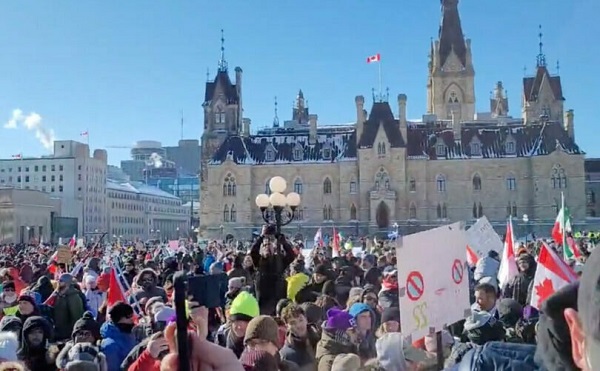
 Freedom Convoy2 days ago
Freedom Convoy2 days agoCourt Orders Bank Freezing Records in Freedom Convoy Case
-
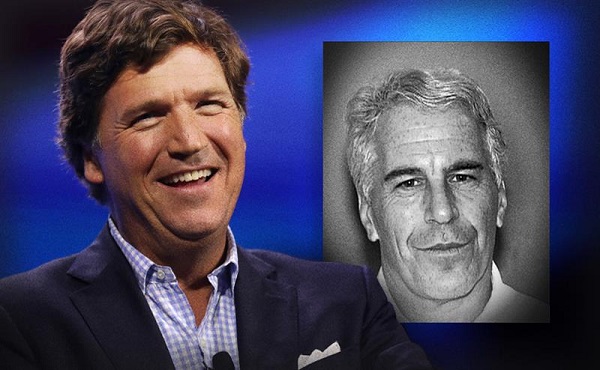
 Crime2 days ago
Crime2 days agoTucker Carlson: US intelligence is shielding Epstein network, not President Trump
-

 Business2 days ago
Business2 days ago‘Experts’ Warned Free Markets Would Ruin Argentina — Looks Like They Were Dead Wrong
-

 Automotive2 days ago
Automotive2 days agoAmerica’s EV Industry Must Now Compete On A Level Playing Field
-
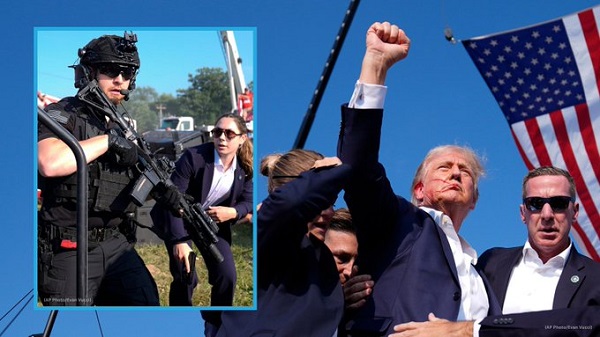
 International2 days ago
International2 days agoSecret Service suspends six agents nearly a year after Trump assassination attempt
-

 Bruce Dowbiggin1 day ago
Bruce Dowbiggin1 day agoThe Covid 19 Disaster: When Do We Get The Apologies?
-

 Alberta1 day ago
Alberta1 day agoFourteen regional advisory councils will shape health care planning and delivery in Alberta






